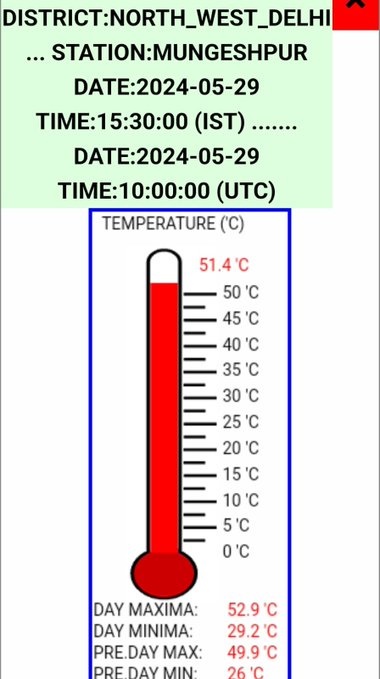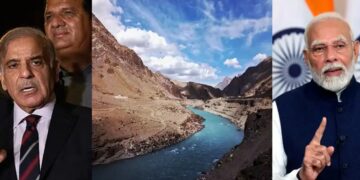Delhi experienced its hottest day on record this Wednesday, as temperatures soared to a scorching 52.3 degrees Celsius. The India Meteorological Department (IMD) reported this extreme temperature at Delhi’s Mungeshpur weather station, marking an unprecedented high for the city.
Following this intense heat, Delhi also received some relief in the form of light rain accompanied by gusty winds.
As the city grappled with the blistering heat, its power demand surged to an all-time high of 8,302 megawatts (MW) on Wednesday afternoon. This marks the first instance in Delhi’s history where power demand has surpassed the 8,300-MW mark.

Power distribution companies had anticipated a peak demand of 8,200 MW for this summer season, making this surge unexpected yet significant.
The State Load Dispatch Centre, Delhi, reported a peak power demand of 8,302 MW on Wednesday afternoon, highlighting the strain on the city’s power infrastructure. This unprecedented demand underscores the challenges faced by authorities in ensuring a stable power supply amidst extreme weather conditions.
Responding to the escalating water crisis exacerbated by the heatwave, the Delhi Jal Board (DJB) has announced stringent measures. The DJB declared a fine of Rs 2,000 for individuals found wasting water.
This decision aims to promote water conservation and curb wastage in the national capital, where water resources are under increasing pressure.
ALSO READ: “Delhi Faces Severe Water Crisis Amid Heatwave; Government Warns Against Wastage”
Prior to this record-breaking temperature, Delhi had already been experiencing unusually high temperatures. On Tuesday, the northwest Delhi locality recorded a scorching 49.9 degrees Celsius, setting the stage for Wednesday’s historic peak.
According to Dr. Naresh Kumar, a scientist at the India Meteorological Department (IMD), yesterday witnessed unprecedented temperatures, with many states experiencing a heatwave to severe heatwave conditions.
Dr. Kumar has issued a red alert for several regions, including western Rajasthan, Punjab, Haryana, Uttar Pradesh, and Madhya Pradesh. He anticipates that these extreme temperatures will persist today before gradually decreasing. He further adds that over the next four days, there will be a noticeable decline in temperatures.
Dr. Kumar also highlights the impending impact of a western disturbance on the western Himalayan region. In addition, he predicts that Kerala may witness the onset of monsoon within the next 24 hours.
#WATCH | Delhi: IMD scientist, Dr Naresh Kumar says, "Yesterday, there were extreme temperatures. Heatwave to severe heatwave situation is prevailing in many states. Today, these extreme temperatures will persist. We have issued a red alert in western Rajasthan, Punjab, Haryana,… pic.twitter.com/EHBeeQh7z6
— ANI (@ANI) May 29, 2024
These extreme temperatures have prompted concerns about public health, infrastructure resilience, and the need for effective climate adaptation strategies in Delhi and beyond.
As Delhi grapples with the impacts of this unprecedented heatwave, authorities are urging residents to take precautions to stay safe and cool. Measures such as staying hydrated, seeking shelter in shaded areas, and avoiding outdoor activities during peak heat hours are recommended to mitigate the risks associated with extreme heat.
In addition, efforts to conserve water and reduce electricity consumption are crucial in ensuring the capital’s resilience in the face of such extreme weather events.

















Comments